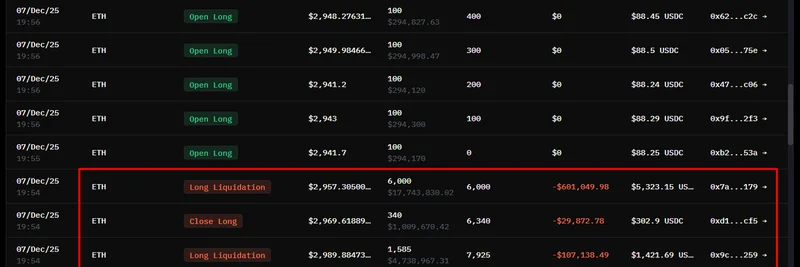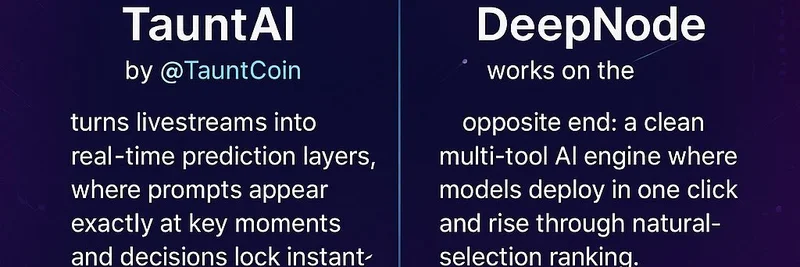If you're knee-deep in the world of meme tokens, you know that the crypto market doesn't operate in a vacuum. Broader economic trends—think inflation, government spending, and central bank policies—can make or break your portfolio. That's why a recent episode of The Rollup podcast, shared via a tweet by host Andy (@ayyyeandy), caught our attention here at Meme Insider. In it, Felix Jauvin (@fejau_inc), a sharp macro analyst and host of Forward Guidance, breaks down why we're in what he calls "the most bullish macro backdrop ever." And yes, this has huge implications for meme tokens.
Reflecting on the 'Trade After the Trade'
Let's start with some context. Back in April 2025, Felix penned a viral thread titled "Bitcoin - the Trade After the Trade" (read it here). The idea? We're entering a new era of "debasement trade," where governments run massive deficits, weakening fiat currencies like the USD. In simple terms, debasement means your money loses value over time due to inflation and endless printing. Traditional assets might struggle, but hedges like gold and Bitcoin thrive because they aren't tied to any one country's policies—you can't slap tariffs on Bitcoin, after all.
Fast-forward to October 2025, and Felix joined The Rollup to reflect on how spot-on that call was. Bitcoin dipped to around $109K in September due to some regulatory hiccups (like SEC probes into digital asset treasuries), but it quickly bounced back to $125K. Why? The macro shift is real: central banks worldwide are easing up, ditching strict inflation targets, and letting economies "run hot." For meme token enthusiasts, this is music to your ears. In a risk-on environment like this, speculative plays—yes, including your favorite dog-themed coins—often see wild pumps as capital floods in searching for high returns.
The Bullish Macro Setup Explained
Felix paints a picture of a world where fiscal dominance rules. That's econ-speak for governments calling the shots on spending, forcing central banks like the Fed to play along by keeping interest rates low and buying up debt. Think Trump's potential playbook: appointing dovish Fed governors, implementing yield curve control (basically capping bond yields to make borrowing cheap), and maybe even stimulus checks funded by tariffs.
But here's the crypto twist—stablecoins are quietly revolutionizing this. These dollar-pegged tokens, backed by T-bills, are eating into traditional banking. In high-inflation spots like emerging markets, they're replacing fiat entirely, expanding USD influence without the U.S. government lifting a finger. Felix predicts stablecoins could hit $3 trillion by 2027-2028, fueling overcollateralized lending protocols (shoutout to projects like Maple or Morpho) that avoid the blowups we saw in 2022.
Tokenization adds another layer. By turning real-world assets into 24/7 tradable blockchain tokens, we're boosting capital efficiency. No more waiting for markets to open—everything moves faster, which is perfect for the hyper-speculative nature of meme tokens. In Asia, where markets are "hyper-financialized" (meaning everyone's trading everything, all the time), this vibe is already driving blockchain adoption. Meme tokens, with their community-driven hype, could ride this wave, especially as retail investors in places like Seoul chase the next big narrative.
And don't forget Bitcoin and gold's tag-team act. They often rotate leadership in rallies—gold surges when Bitcoin consolidates, and vice versa. In a debasement cycle, Bitcoin wins big because its supply adjusts via mining difficulty, unlike gold which can ramp up production. For meme tokens, this broader crypto strength acts as a rising tide, lifting all boats (or should I say, all frogs and dogs?).
Outlook for Q4 2025 and Into 2026
Looking ahead, Felix is optimistic for Q4. Seasonality is on our side—October to December historically favors bulls. Hedge funds aren't overexposed yet, and volatility funds have room to pile in for another 25% upside. Government shutdowns? They're actually market-positive right now, cutting down on negative headlines and letting assets like Bitcoin and gold rally unchecked.
But watch for tail risks, like $400-600 billion in tariffs acting as a stealth tax hike. If they fund stimulus (and Congress approves), it could supercharge consumer spending, inflating nominal assets and sparking meme token mania. On the flip side, if the Supreme Court rules them unlawful, expect refunds that juice 2026 growth.
Longer-term, fiscal dominance locks in. Stablecoins might proliferate through big players like Amazon or JP Morgan, all made fungible under regs like the Genius Act. Fiat currencies could fade, with private issuers taking over. For blockchain practitioners, this means more efficient, always-on markets—ideal for meme tokens that thrive on virality and quick flips.
Of course, everything feels expensive right now, and value investing (buying "cheap" assets) is dead in this regime. Instead, chase growth and nominal plays. Meme tokens fit right in: they're not about fundamentals; they're about momentum in a hot economy.
If you're building or trading in the meme space, this episode is a must-watch (check it out on YouTube). It reminds us that while memes are fun, understanding the macro can turn good trades into great ones. Stay tuned to Meme Insider for more breakdowns on how global trends impact your favorite tokens. What's your take—bullish on memes for 2026? Drop a comment below!


